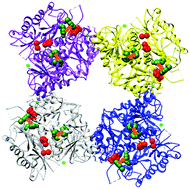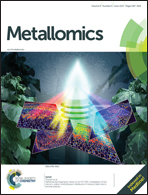Mechanistic insight into the heme-independent interplay between iron and carbon monoxide in CFTR and Slo1 BKCa channels
Abstract
Ion channels have been extensively reported as effectors of carbon monoxide (CO). However, the mechanisms of heme-independent CO action are still not known. Because most ion channels are heterologously expressed on human embryonic kidney cells that are cultured in Fe3+-containing media, CO may act as a small and strong iron chelator to disrupt a putative iron bridge in ion channels and thus to tune their activity. In this review CFTR and Slo1 BKCa channels are employed to discuss the possible heme-independent interplay between iron and CO. Our recent studies demonstrated a high-affinity Fe3+ site at the interface between the regulatory domain and intracellular loop 3 of CFTR. Because the binding of Fe3+ to CFTR prevents channel opening, the stimulatory effect of CO on the Cl− and HCO3− currents across the apical membrane of rat distal colon may be due to the release of inhibitive Fe3+ by CO. In contrast, CO repeatedly stimulates the human Slo1 BKCa channel opening, possibly by binding to an unknown iron site, because cyanide prohibits this heme-independent CO stimulation. Here, in silico research on recent structural data of the slo1 BKCa channels indicates two putative binuclear Fe2+-binding motifs in the gating ring in which CO may compete with protein residues to bind to either Fe2+ bowl to disrupt the Fe2+ bridge but not to release Fe2+ from the channel. Thus, these two new regulation models of CO, with iron releasing from and retaining in the ion channel, may have significant and extensive implications for other metalloproteins.

- This article is part of the themed collections: Recent Review Articles and Iron in Biology


 Please wait while we load your content...
Please wait while we load your content...